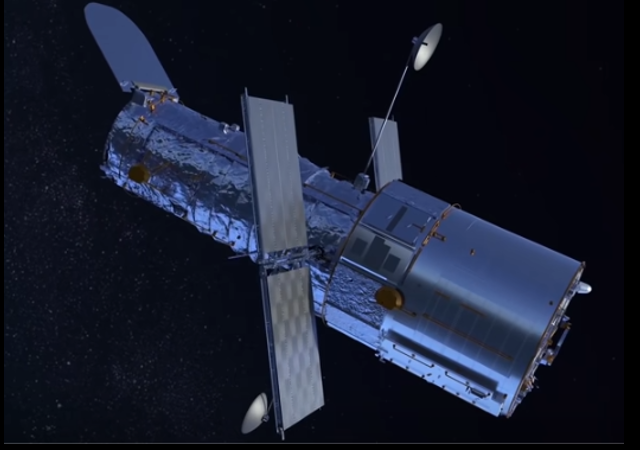NASA Successfully Repairs Hubble Space Telescope
Problem likely stemmed from a glitchy power circuit, which told the satellite’s computer to shut down.

Last month, I wrote the Hubble Space Telescope was forced to stop its science work due to a computer glitch.
The National Aeronautics and Space Administration (NASA) now reports that the issues have been resolved, and the iconic telescope…. is fully operational.
After a month of frantic tinkering, NASA said Friday that its aging Hubble Space Telescope was on the mend, recovering from a computer problem that crippled what many astronomers call the most productive scientific instrument ever built.
As the bus-size observatory circled Earth, space agency engineers worked by remote control to switch Hubble from its vintage electronics to backup hardware. In the final step, they powered up a payload computer that restored control of its six cameras and sensors, which peer through visible, infrared and ultraviolet wavelengths of light to the edge of space and the dawn of time.
“We are absolutely delighted that the observatory is up and running again,” said Kenneth Sembach, director of the Baltimore-based Space Telescope Science Institute, which handles the Hubble science operations. “All indications are that it’s doing well and we will get back to doing science again this weekend.”
The unit has already been put to work capturing more iconic space images.
One of its new images shows a pair of galaxies slowly colliding. The other image shows a spiral galaxy with long, extended arms. Most spiral galaxies have an even number of arms, but this one only has three.
Hubble is also observing Jupiter’s northern and southern lights, or auroras, as well as tight clusters of stars. NASA hasn’t shared images from those observations yet.
“I’m thrilled to see that Hubble has its eye back on the universe, once again capturing the kind of images that have intrigued and inspired us for decades,” NASA Administrator Bill Nelson said in a press release. “This is a moment to celebrate the success of a team truly dedicated to the mission. Through their efforts, Hubble will continue its 32nd year of discovery, and we will continue to learn from the observatory’s transformational vision.”
The solution to the technical glitch involved utilizing the backup payload computer.
…[L]ast week, NASA engineers discovered that the source of the glitch likely resides in a special protection circuit that prevents the satellite’s Power Control Unit from sending too much or too little power to the payload computer. If the voltage supply goes beyond safe operating levels, the circuit automatically tells the payload computer to shut down, according to NASA.
“The team’s analysis suggests that either the voltage level from the regulator is outside of acceptable levels (thereby tripping the secondary protection circuit), or the secondary protection circuit has degraded over time and is stuck in this inhibit state,” NASA wrote on July 14.
NASA technicians got around this problem by switching operations over to the satellite’s backup payload computer, and activating a backup Power Control Unit.
With this backup hardware booted up, the satellite should be able to continue observing the cosmos — and hopefully working in tandem with the new James Webb Space Telescope, expected to launch later this year — for many years to come, according to NASA.
It is being reported that all the missions that got scrubbed because of the problem will be rescheduled.
 DONATE
DONATE
Donations tax deductible
to the full extent allowed by law.








Comments
Good news!
Now why didn’t Trump get Arecibo repaired (replacing those cables would have cost no more than $1 million) before it collapsed?
Because Trump understood that the federal government’s only legitimate role in space exploration is as part of national defense. Not taking pretty pictures of the sky.
Thank you.
I will never forget the opening remark made by the Hubble project director in his TED Talk(?): “If you are ever named to direct a major scientific project, make sure they name it something that doesn’t rhyme with trouble.”
Unbelievable. Fantastic.